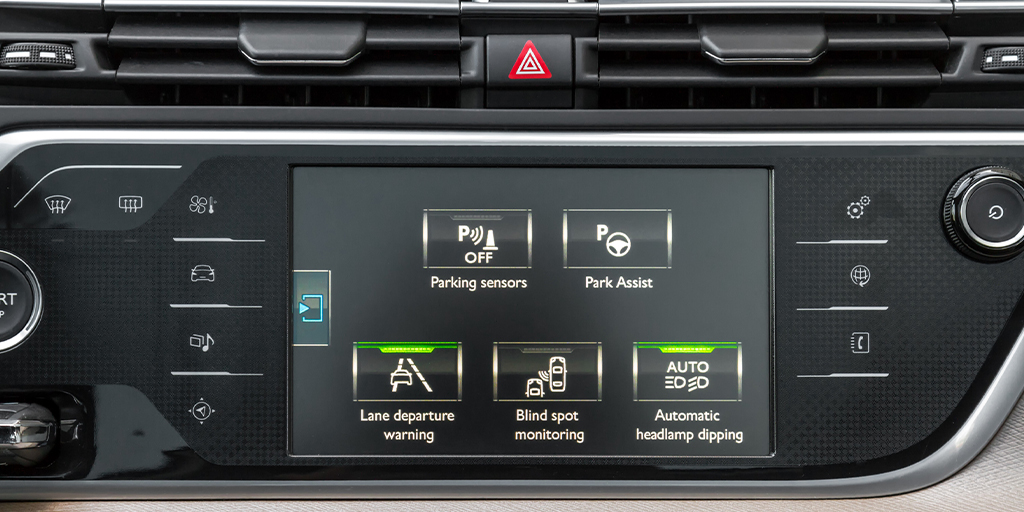Advanced Driver Assistance Systems of ADAS technology can vary from car to car but can include:
- Speed Assistance—Using the car’s cameras, road map data, or both, it can identify road limit speed signs and warn the driver of their existence audibly. It can also continue to warn the driver that they are exceeding the speed limit.
- Lane Assist – using the car’s cameras to identify land and road markings, the technology warns drivers if they have strayed out of their line, often by wobbling the steering wheel or signalling an on-screen warning. In the case of overtaking, indicating both out and in would not prompt a warning.
- Automatic Emergency Braking: Radar and lidar technologies identify pedestrians, cyclists, and other vehicles, and if they sense that such events could result in a collision, they will automatically brake the car.
- Attention/Drowsiness Warning – In-car cameras detect the driver’s eyes, facial features, and repeated yawns or blinks. If they think the driver may be too drowsy to drive, they sound an audible alarm.
- Blind-Spot Monitoring – sensors detect when another vehicle is in the driver’s blind spot and want the driver visually or audibly until the area is clear.
The first four features are legally mandated for all new cars under EU General Safety Regulations and must be activated by default each time a car is started. They apply in Northern Ireland and will soon be implemented across the rest of Great Britain. In reality, they are already present in many vehicles.
These safety features are naturally valued by insurers. However, this technology has not been without issues, commonly when the cars ‘thinks’ it anticipates a safety issue or misreads the situation.
Drivers report frightening episodes of unexpected and unexplained emergency ‘phantom braking’, while the technology can misread speed limits on other occasions. These are not ideal, and it is important that drivers take time to understand the technology, ensure they are always alert, and pay attention to the real-world road that they can see. It may be possible to turn the technology off in some cars, but this must be undertaken every time it is started.
Manufacturers are continuing to improve the technology with over-the-air updates, and there have been some marked updates. We must recognise that while the various ‘binging’ warnings might be irritating, they are designed with safety in mind.









